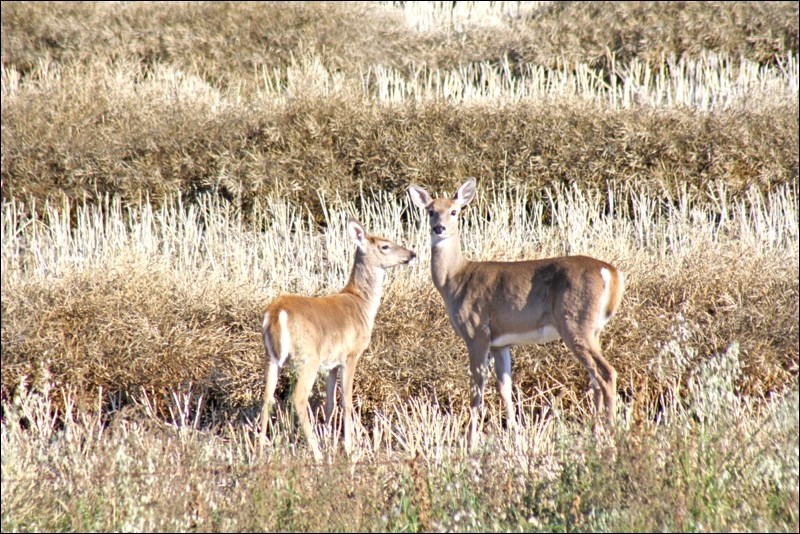I saw one of my high school teachers in Regina a while back who told me that he reads my columns with great interest. He is still not sure how I ever became a law enforcement officer with vast responsibilities from what he remembered about me in school, but I told him that we all grow up someday. He seemed to accept it. Thanks for the kind words Mr. K.
With hunting season underway, I have been getting lots of questions about various topics to discuss. Some may be a bit of a reminder, but some new topics are generating some interest.
One of the first comments I received this year was from a gentleman who had just purchased his hunting licence. With the purchase of his licence, we provided him with a copy of the Hunters’ and Trappers’ Guide. He commented that it was smaller than past years and he is correct, as some of the content has been moved to saskatchewan.ca/hunting.
Online users can simply print specific sections of the guide (or the entire guide) at home, download it to their mobile device, or link to it through some mobile hunting applications.
Over the last few weeks, I have heard some discussion on various social media venues about land access. The one thing that keeps coming up is when a wounded big game animal runs from land that you have access to onto land that you do not have permission to be on because it is posted.
What you should do in a situation like that is make contact with the owner of the posted land. Explain the situation and ask for permission to enter onto the land to retrieve your harvest.
If the landowner says no, which that person is entitled to do, contact your local conservation officer, who will retrieve the animal for you. Don’t enter onto the land without permission or you could face charges.
Here are a few more questions from hunters and landowners.
Q: Can ravens be shot if they become a nuisance?
A few years back, changes were made to The Wildlife Regulations, which allowed landowners and trappers to legally shoot ravens found damaging property.
Q: Can I use an ATV to hunt upland birds?
All Terrain Vehicles, side by sides or snowmobiles may not be used to hunt wildlife in all southern zones in Saskatchewan during an open big game season. They can be used if there are no big game seasons open.
Q: Are there parcels of land that a hunter can hunt on that is not privately owned?
Yes, there are Fish and Wildlife Development Fund Lands, as well as Ducks Unlimited Lands and even some pastures that are open to the public.
Wildlife lands are clearly marked and you may only hunt on foot. A vehicle can be used to retrieve legally harvested animals by the most direct route, but make sure your firearm is encased.
Ducks Unlimited Land is also a good option and these parcels are clearly marked as hunt on foot only.
The last parcels of land are community pastures. These are normally closed to hunters until November 1, so that they have time to remove the cattle. It is always best to talk with the pasture manager regarding access rules.
Q: Can I legally shoot a moose from a boat?
The short answer to this is yes. A boat is not considered a motor vehicle under the Wildlife Act, so one can legally carry a loaded firearm in a boat and shoot from it. Make sure that if you harvest your animal in the water you have the means to retrieve it. Also, ensure you are not harassing or chasing that animal with a boat.
Q: Do you have any tips on tagging and or field dressing your big game?
Remember that when you are out hunting big game, you should take special care in preparing your harvest prior to taking it to a meat cutter. Make sure that your licence is available and the harvest is tagged properly, as the meat cutter has records that they must fill out.
If you de-boned meat, make sure that it remains cool. The main reason for meat spoilage is body heat. Ensure you have good air circulation around the carcass and skin it, if possible, to aid in the cooling.
Take note in what you put your de-boned meat into. Normal garbage bags may not be the answer, as many of them are made with a disinfectant that kills bacteria and odour. They are probably not something that you want your de-boned meat sitting in.
Until next time … stay safe out there
— Ministry of Environment conservation officer Lindsey Leko has spent more than 26 years as a conservation officer in Saskatchewan. If you have questions, please contact lindsey.leko@gov.sk.ca.



